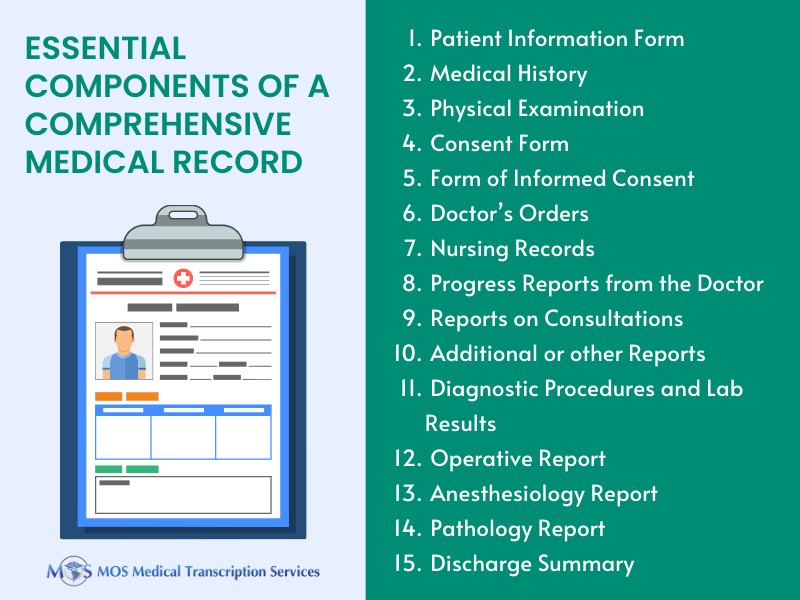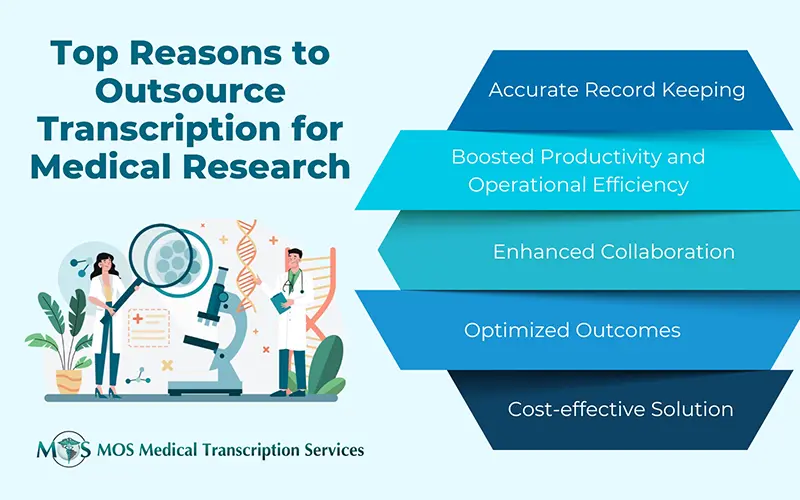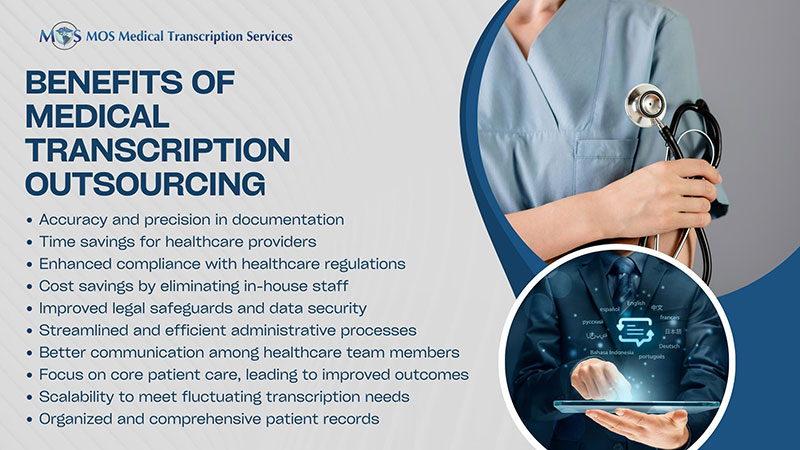
Table of Contents
Medical records are a crucial resource containing all the information about a patient’s health condition, medical history and other vital data. The medical chart contains provisions and rights that prohibit the information from getting into the wrong hands or being disseminated unlawfully. They are both medical and legal documents. Therefore, the most effective method to create accurate medical records is to use a medical transcription service.
Traditionally, medical records were documented on paper with tabs dividing the parts. Reports were transferred to the appropriate tab once they were printed out. These components are still included in the electronic patient record, and they are now accessible electronically with the help of medical transcription and EHR.
What Is a Medical Record and Why Is It Important?
A patient’s medical history and care are systematically documented in a medical record. The patient’s health information (PHI), which includes identity data, medical examination results, and billing data, is typically contained there. The U.S. Department of Health and Human Services states that only a person or that person’s personal representative may have access to these sensitive documents.
From patient to patient, there will be a big difference in the amount, type, and degree of information included in their medical record. The amount of care a patient needs will mostly dictate what documentation is needed. Therefore, it’s important to familiarize yourself with what exactly is contained in them as well as your legal rights in relation to such vital information.
It is also necessary for business professionals who might need to obtain medical records to become familiar with these records and comprehend their fundamental structure. The patient’s health and wellness, as well as any information that can improve care, are better understood by future and existing health providers with the help of this valuable data. However, this is not the only use of medical records. Depending on the case, medical records may be useful in legal proceedings. Without the subject’s permission, access to these records is prohibited.
However, getting hold of medical records for legal answers might be a challenge. The process can be expedited by using a good medical document retrieval service. Similarly, medical records are also necessary to process a person’s health insurance claims. In order to ensure that the medical expenditures match the claims that are made, insurance companies request medical evidence while analyzing claims.
So, now that we have highlighted the significance of having accurate medical records, let us consider the components of a medical record.
Legal Significance of Having a Medical Record
Medical records have crucial legal significance, serving as comprehensive documentation of a patient’s medical history, treatment plans, and healthcare decisions. In legal contexts, these records are essential as they provide objective, detailed accounts of patient care, which can be pivotal in medical malpractice cases, insurance claims, or personal injury lawsuits. Medical records can confirm timelines, treatments administered, and physician recommendations, creating a clear narrative that helps determine whether standard care was provided. They also play a key role in defending healthcare providers by showing that appropriate procedures were followed, supporting them against allegations of negligence. Given their sensitivity, accurate and confidential handling of these records is essential to protect patient privacy and comply with healthcare regulations, such as HIPAA.
Key Elements of a Medical Record

- 1. Patient Information Form: This document is filled out by the patient on their first visit to the doctor’s office and updated as needed. It contains information that is directly related to the patient, such as their last name, first name, gender, DOB, marital status, street address, city, state, zip code, telephone number, social security number, employment status, employer’s address and phone number, and name and contact information for the person who is responsible for them.
- 2. Medical History: This document outlines any medical ailments the patient has had in the past as well as those he or she has at present.
- 3. Physical Examination: A complete head-to-toe evaluation of the patient’s physical state is included in the physical examination (PE) record.
- 4. Consent Form: It is a signed statement from the patient or guardian approving the course of treatment.
- 5. Form of Informed Consent: It is a written statement detailing the goals, dangers, and advantages of an operation that is signed by the patient or legal guardian, and acts as evidence that the patient was properly informed before having the treatment or procedure done.
- 6. Doctor’s Orders: It includes a list of the procedures, medicines, therapies, and other prescriptions for a certain patient.
- 7. Nursing Records: In these records, vital indicators including blood pressure, temperature, pulse, and respiration, of the patient are recorded.
- 8. Progress Reports from the Doctor: It is the documentation provided by the doctor outlining the patient’s condition, the outcomes of the doctor’s assessment, summary of the test results, the treatment plan, and any necessary data updates.
- 9. Reports on Consultations: It is documentation provided by experts the doctor contacted to evaluate the patient.
- 10. Additional or other Reports: These maintain a record of treatments or procedures given to patients, such as chemotherapy, respiratory therapy, or physical therapy.
- 11. Diagnostic Procedures and Lab Results: These comprise documents containing the findings of every diagnostic test and laboratory procedure that the patient underwent.
- 12. Operative Report: It has the surgeon’s written account of the process, including the preoperative and postoperative diagnoses, the precise specifics of the surgical procedure, the patient’s response to it, and any complications that may have arisen.
- 13. Anesthesiology Report: It includes information from the attending anesthesiologist or anesthetist that provides a thorough account of anesthesia during surgery, including the drugs used, their dosage and administration time, the patient’s reaction, the monitoring of vital signs, how well the patient tolerated the anesthesia, and any complications that may have arisen.
- 14. Pathology Report: The findings or outcomes of samples taken from the patient, such as bone marrow, blood, or tissue, are documented in the pathology report. Pathology transcription converts all pathology records into precise transcripts.
- 15. Discharge Summary: A summary of the patient’s hospital care, including the date of admission, the diagnosis, the course of treatment and any responses from the patient, the outcomes of the tests, the final diagnosis, the follow-up plans, and the date of discharge.
For medical practices, hospitals and healthcare units, it is important to keep their medical records accurate and up-to-date. With so many patients flowing into your healthcare organization, it is best to utilize HIPAA-compliant medical transcription service to streamline medical documentation. They also understand the key elements that constitute the medical records. A complete and accurate medical chart means good patient care and optimal treatment outcome.


